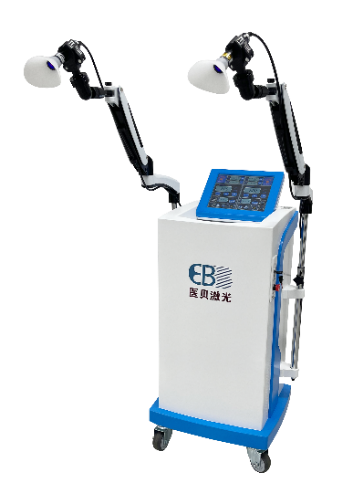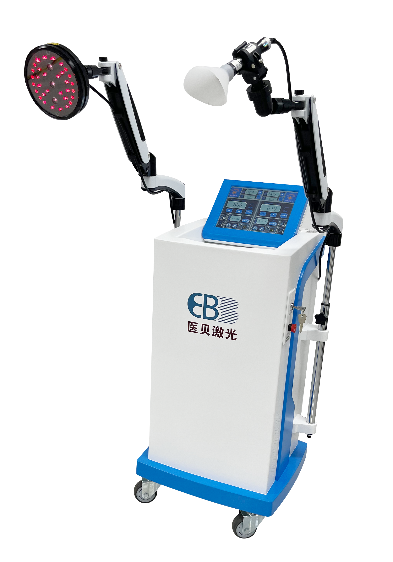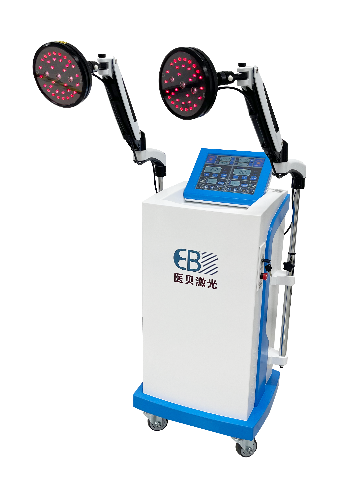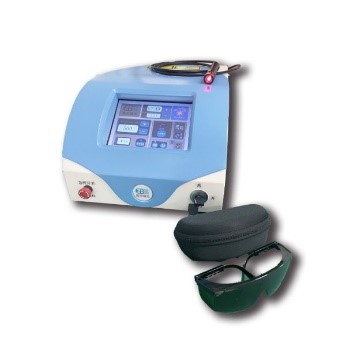Clinical Applications
Contact information
Switchboard:
+86-21-60673559
Fax:
+86-21-57658017
Email:
eblaser@eblaser.com.cn

+86-21-60673559
Fax:
+86-21-57658017
Email:
eblaser@eblaser.com.cn

WeChat
your location: Home > Clinical Applications Clinical Applications
Clinical treatment mechanism
Through the biostimulation effect of semiconductor laser, that is, photobiological effect and thermal effect, promote cell regeneration, improve blood circulation, reduce inflammation and relieve pain, reduce edema, and regulate immune function.
(1) Promote wound healing during irradiation, promote the formation and growth of new blood vessels, and increase the content of cellular ribonucleic acid and glycogen, fibroblast proliferation, granulation tissue proliferation, stimulate protein synthesis, lead to regeneration of new epithelial tissue, and promote tissue repair Recover the soft tissue and bone tissue regeneration, promote blood circulation, eliminate inflammation and accelerate wound healing.
(2) During irradiation, the analgesic substance in the tissue is released, the morphine-like substance is released, the local serotonin content is decreased, the excitability of the peripheral nerve is reduced, the release of enkephalin substances is promoted, the immune function of the body is regulated, and the pain valve is improved. The combined effects of these factors produce the desired analgesic effect.
(3) The thermal energy and chemical energy generated by the laser absorption by the tissue during irradiation are very small, so as not to damage the tissue, but can exert biological stimulation adjustment effect on the body. Improve microcirculation system, inhibit smooth muscle tension, increase capillary blood flow, reduce platelet aggregation, reduce buffer aggregation in blood, reduce blood lipid and oxygenation substances, stabilize red blood cell damage, enhance antithrombin activity coefficient, enhance tissue Permeability, reduce edema and hematoma. Improve the phagocytic function of white blood cells, affect the activity of enzymes, regulate the body's immune function, and achieve the purpose of anti-inflammatory, blood circulation and siltation.
(1) Promote wound healing during irradiation, promote the formation and growth of new blood vessels, and increase the content of cellular ribonucleic acid and glycogen, fibroblast proliferation, granulation tissue proliferation, stimulate protein synthesis, lead to regeneration of new epithelial tissue, and promote tissue repair Recover the soft tissue and bone tissue regeneration, promote blood circulation, eliminate inflammation and accelerate wound healing.
(2) During irradiation, the analgesic substance in the tissue is released, the morphine-like substance is released, the local serotonin content is decreased, the excitability of the peripheral nerve is reduced, the release of enkephalin substances is promoted, the immune function of the body is regulated, and the pain valve is improved. The combined effects of these factors produce the desired analgesic effect.
(3) The thermal energy and chemical energy generated by the laser absorption by the tissue during irradiation are very small, so as not to damage the tissue, but can exert biological stimulation adjustment effect on the body. Improve microcirculation system, inhibit smooth muscle tension, increase capillary blood flow, reduce platelet aggregation, reduce buffer aggregation in blood, reduce blood lipid and oxygenation substances, stabilize red blood cell damage, enhance antithrombin activity coefficient, enhance tissue Permeability, reduce edema and hematoma. Improve the phagocytic function of white blood cells, affect the activity of enzymes, regulate the body's immune function, and achieve the purpose of anti-inflammatory, blood circulation and siltation.
Clinical application range
According to medical literature, combined with the experience of clinical application of semiconductor laser users for nearly half a century, medicinal laser treatment is especially suitable for orthopedics, trauma surgery and pain department: bone pain, muscle pain, soft tissue pain, nerve pain, knife edge and wound pain. Lasers also have a certain effect on promoting open wounds and wound tissue regeneration, and accelerating repair function. For example, after flap transplantation of trauma surgery, accelerate the wound healing; postoperative wound laser radiation accelerates the repair of damaged tissue, relieves postoperative pain, reduces the workload of nursing, and accelerates the turnover rate of the bed.
The medical laser mainly promotes cell regeneration through the bio-stimulating effect of the semiconductor laser, improves blood circulation, reduces inflammation and relieves pain, reduces edema, and regulates the body's immune function. The dominant wavelength of the medical laser semiconductor is 808 nm, which is a near-infrared spectrum. The wavelength at which laser radiation has the greatest penetration into skin, fat and muscle tissue and bone tissue is in the infrared spectrum. Because of its strong penetrating power to human tissues, it has a good effect on deep tissue lesions. The other wavelength of the medicinal laser is 635 nm, which is a visible red spectrum and has a good effect on superficial tissue lesions. The overall effect of the laser-wavelength composite wavelength appears to be a therapeutic effect from shallow to deep.
Laser treatment can be used in patients with metal prostheses and can be treated directly at the prosthesis. Such as: joint replacement, built-in steel nails.
Clinical Application: through body surface irradiation, used for anti-inflammatory and pain relief.
◆Osteopathy ◆Orthopedics ◆Physiotherapy ◆Acupuncture and Moxibustion
◆Stomatology ◆ ENT ◆ Dermatology ◆Pediatrics
◆Obstetricians and Gynecologists ◆Andrology
The medical laser mainly promotes cell regeneration through the bio-stimulating effect of the semiconductor laser, improves blood circulation, reduces inflammation and relieves pain, reduces edema, and regulates the body's immune function. The dominant wavelength of the medical laser semiconductor is 808 nm, which is a near-infrared spectrum. The wavelength at which laser radiation has the greatest penetration into skin, fat and muscle tissue and bone tissue is in the infrared spectrum. Because of its strong penetrating power to human tissues, it has a good effect on deep tissue lesions. The other wavelength of the medicinal laser is 635 nm, which is a visible red spectrum and has a good effect on superficial tissue lesions. The overall effect of the laser-wavelength composite wavelength appears to be a therapeutic effect from shallow to deep.
Laser treatment can be used in patients with metal prostheses and can be treated directly at the prosthesis. Such as: joint replacement, built-in steel nails.
Clinical Application: through body surface irradiation, used for anti-inflammatory and pain relief.
◆Osteopathy ◆Orthopedics ◆Physiotherapy ◆Acupuncture and Moxibustion
◆Stomatology ◆ ENT ◆ Dermatology ◆Pediatrics
◆Obstetricians and Gynecologists ◆Andrology
Clinical application department
-
 Dermatology
Dermatology -
 Traditional Chinese Medicine / Rehabilitation
Traditional Chinese Medicine / Rehabilitation -
 Andrology / Gynecology
Andrology / Gynecology -
 Plastic surgery / beauty
Plastic surgery / beauty -
 Oral / Facial
Oral / Facial -
 Surgical
Surgical -
 Pediatrics
Pediatrics

